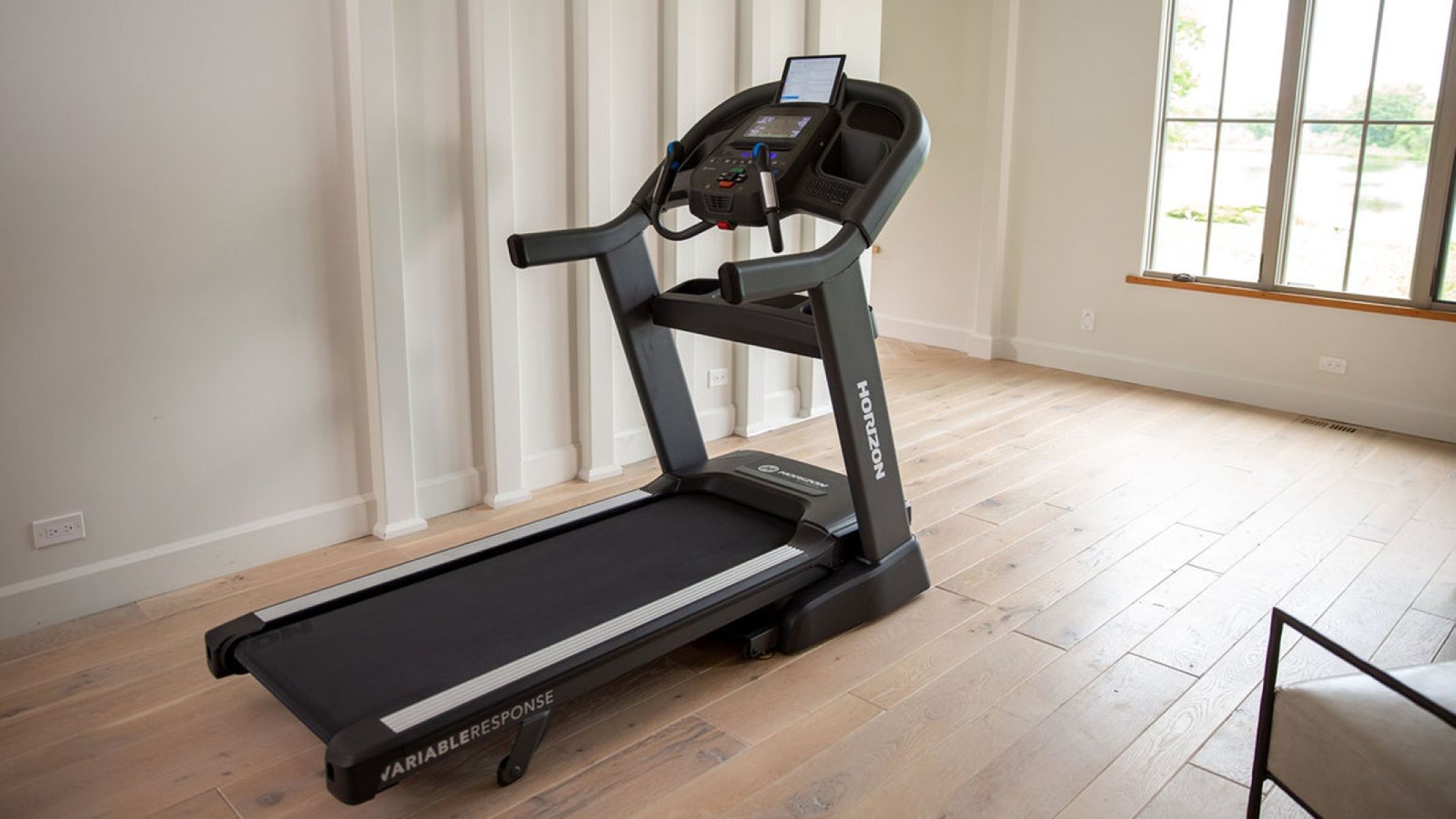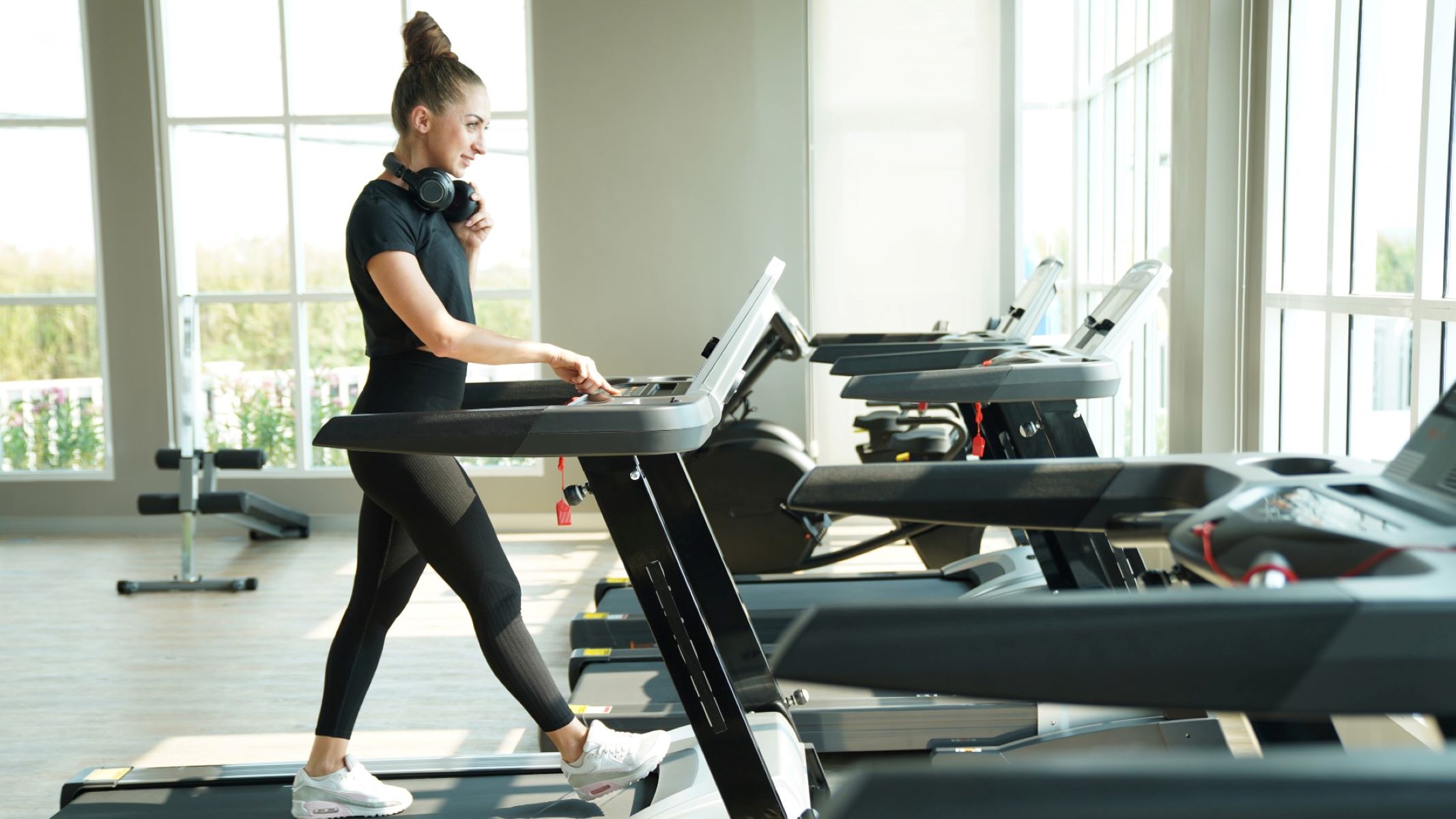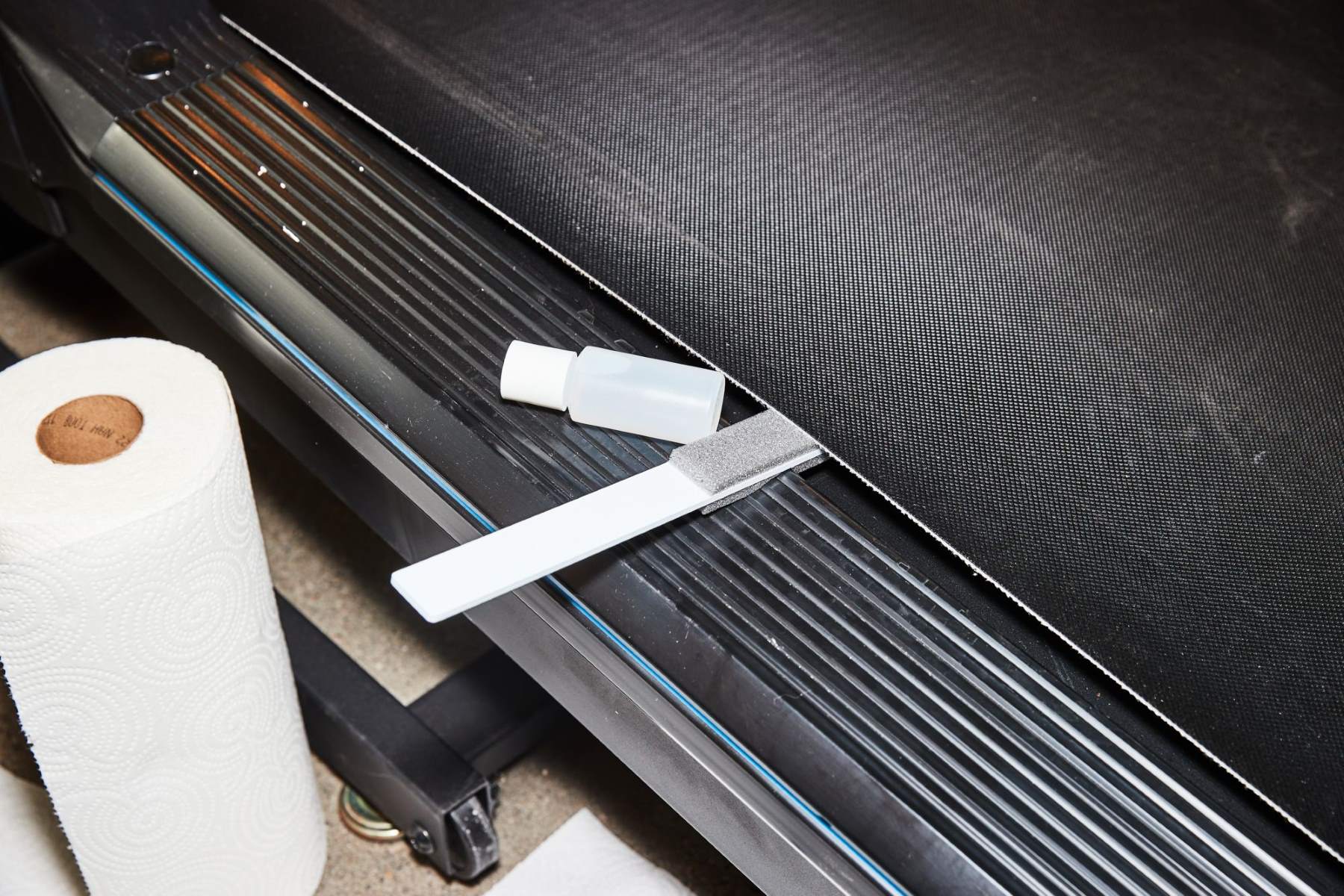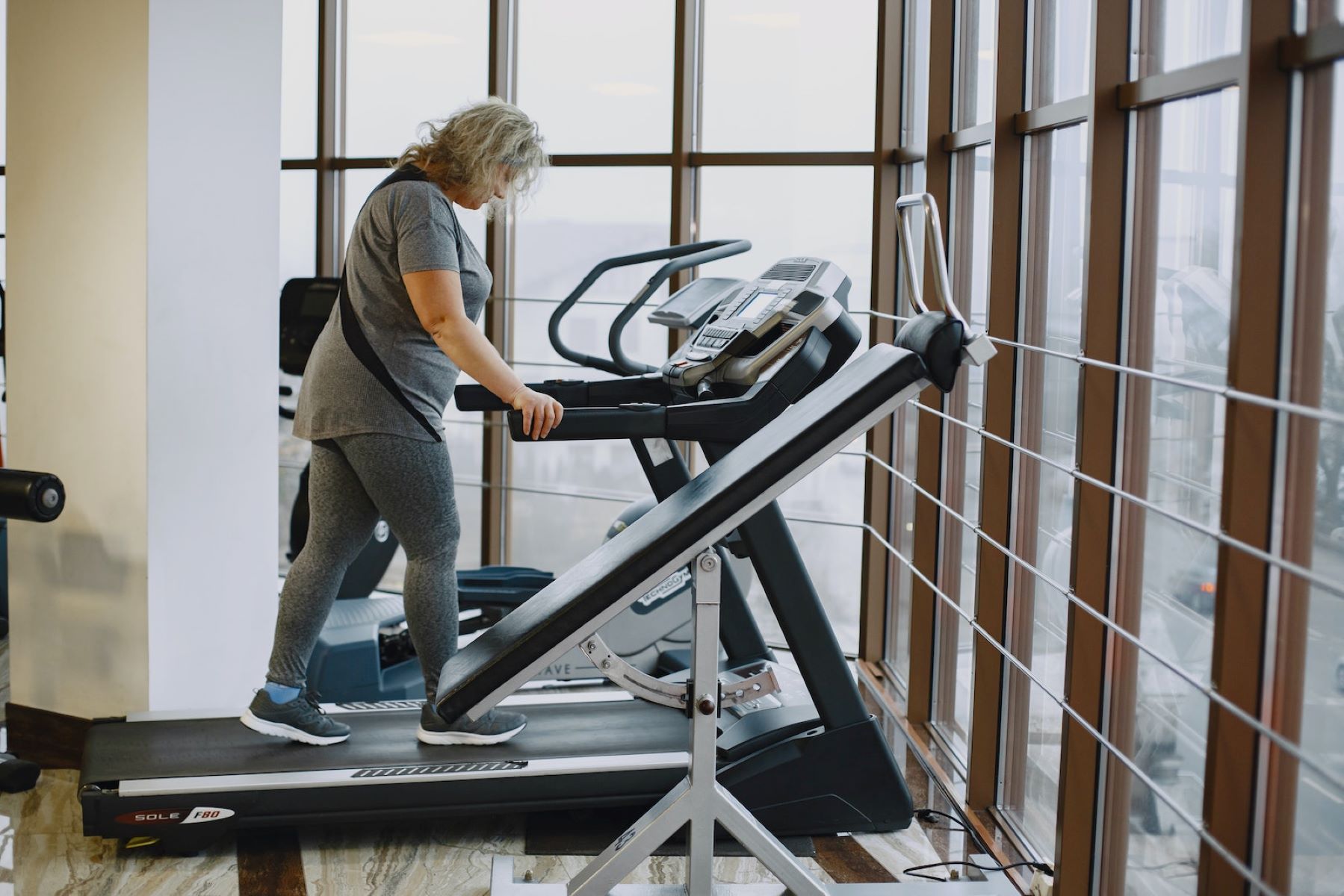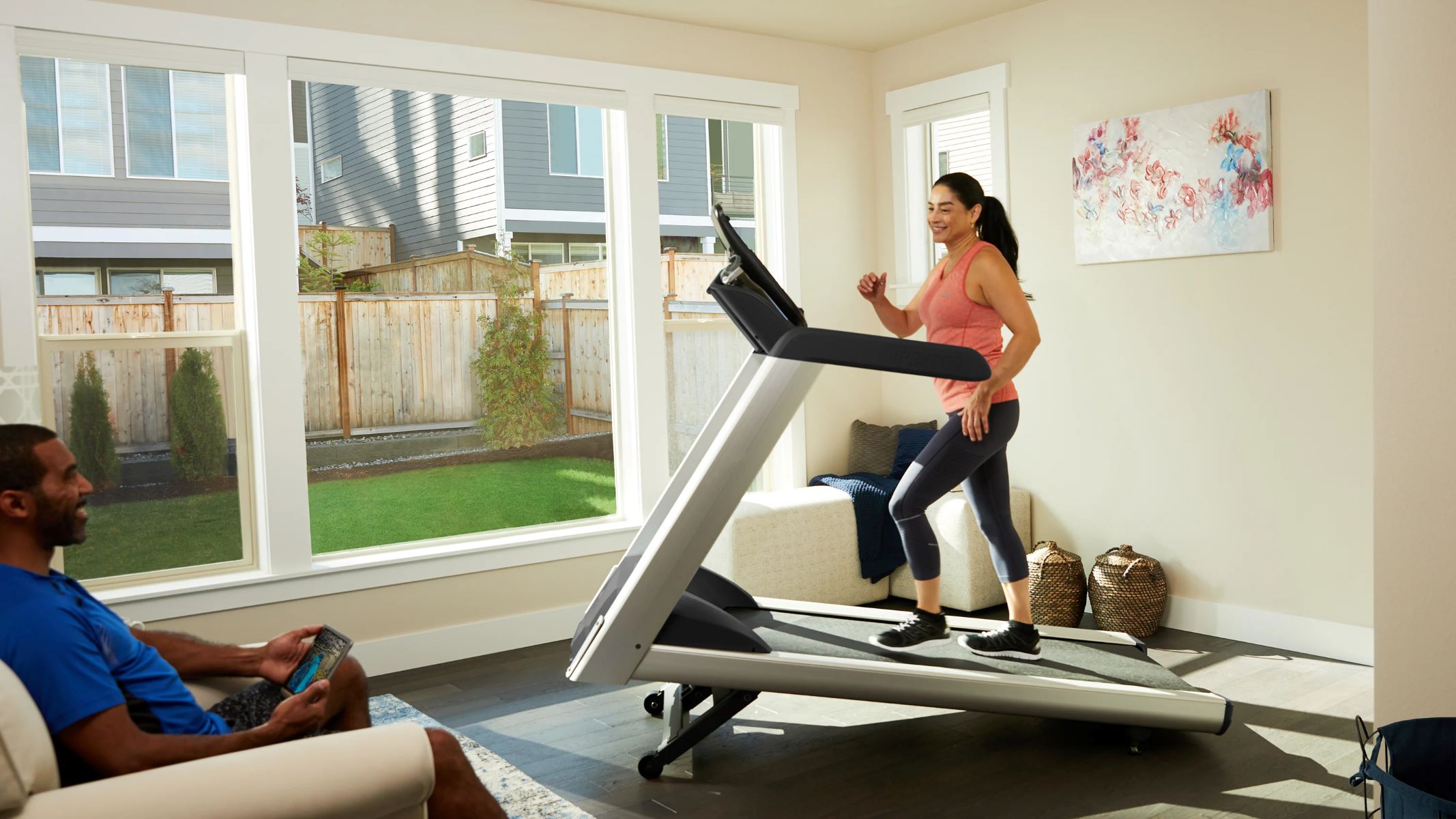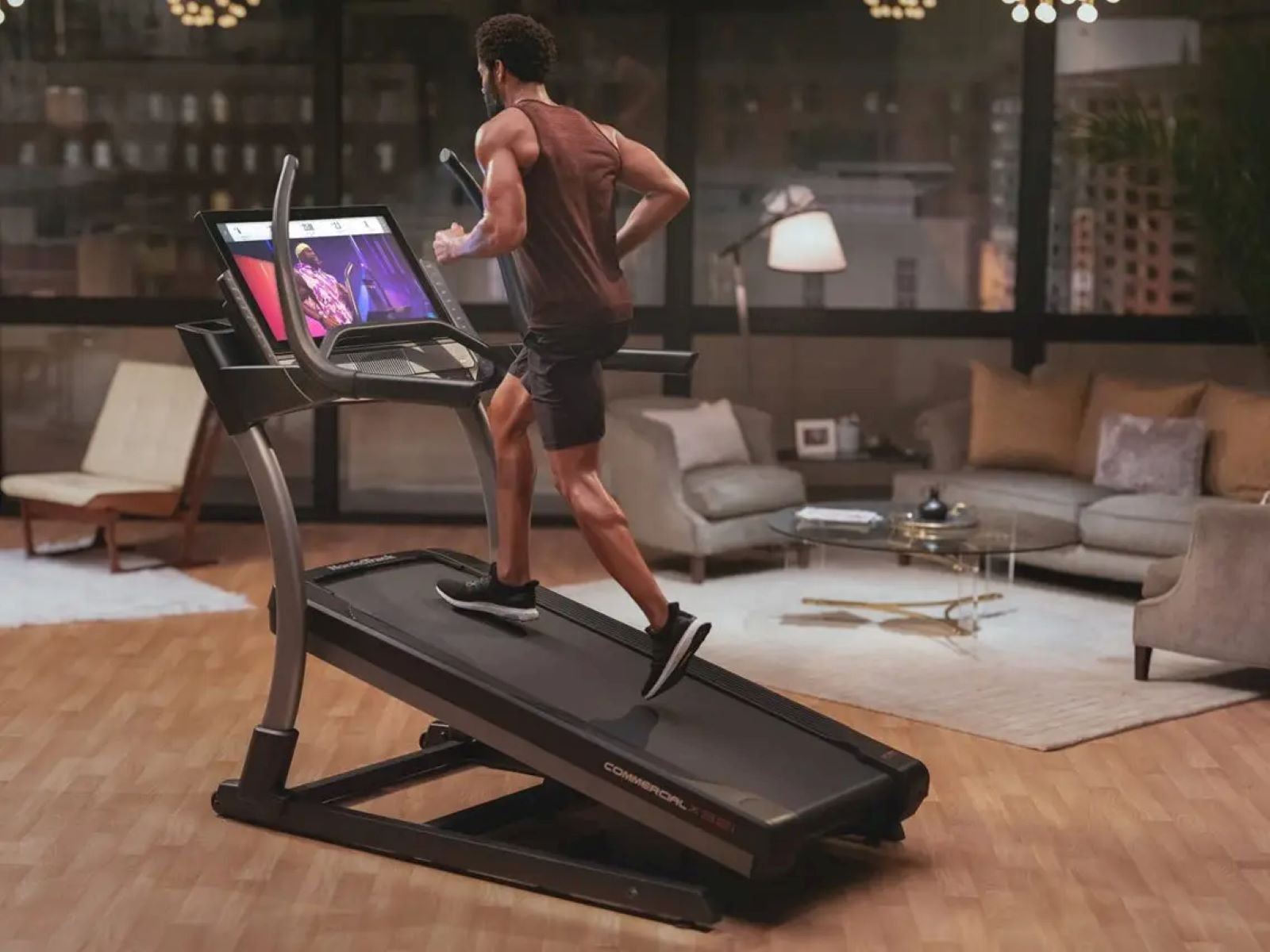Home>Misc>Featured>Why Do My Hips Hurt After Walking On Treadmill
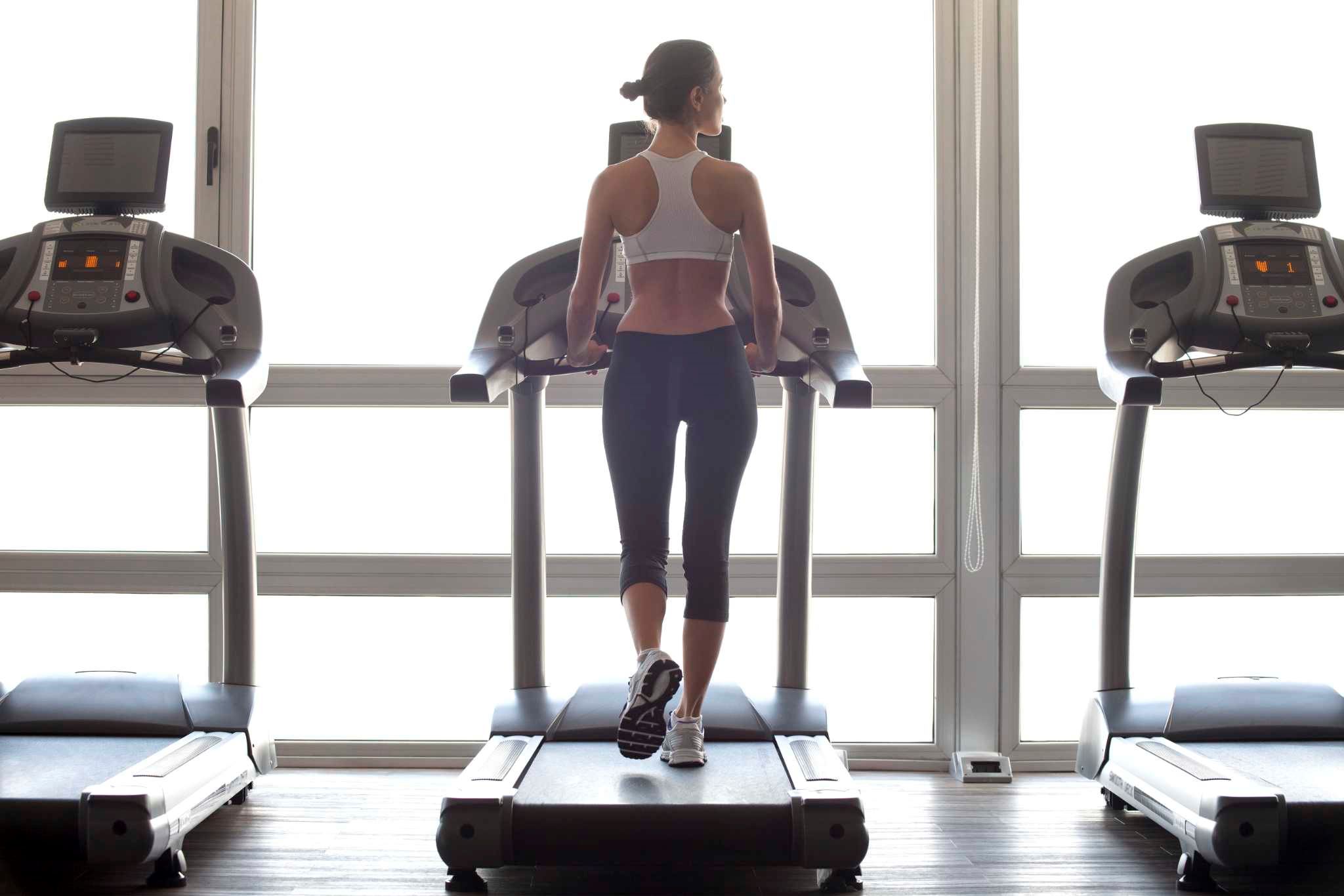

Featured
Why Do My Hips Hurt After Walking On Treadmill
Modified: January 2, 2024
Featured: Discover why your hips hurt after walking on the treadmill and learn how to alleviate the discomfort and prevent further pain.
Introduction
Walking on a treadmill is a popular form of exercise that allows individuals to stay active and fit within the comforts of their own homes or at the gym. However, some people may experience hip pain after walking on a treadmill, which can be a cause for concern. Whether you’re a regular treadmill user or just starting out, understanding why your hips hurt after a treadmill workout is essential to prevent further discomfort and injury.
Walking on a treadmill involves repetitive movements, which can put stress on your lower body, including the hips. The biomechanics of treadmill walking differ slightly from walking on a solid surface, as the treadmill belt moves beneath your feet, requiring your body to adjust and maintain balance. This constant motion can affect the muscles, tendons, and joints surrounding the hip area, leading to pain and discomfort.
There are several common causes of hip pain after walking on a treadmill. It’s essential to identify the underlying issue to address it properly and prevent further discomfort. In this article, we will explore some of the common causes of hip pain after treadmill walking, as well as provide tips on how to prevent and manage this pain for a more enjoyable and injury-free workout experience.
Understanding the biomechanics of walking on a treadmill
Walking on a treadmill may seem like a straightforward activity, but understanding the biomechanics behind it can help shed light on why your hips might be hurting after a workout. When you walk on a treadmill, your body goes through a specific set of movements and adjustments to maintain balance and propel yourself forward.
One significant difference between walking on a treadmill and walking on a solid surface is the movement of the treadmill belt. As the belt moves, your feet must adjust to the continuous motion, which can affect the alignment and stability of your hips. This repetitive movement can put strain on the muscles, tendons, and joints surrounding the hip area.
Additionally, walking on a treadmill often involves a higher cadence compared to regular walking. This means that your hips are subjected to a higher number of steps per minute, potentially leading to increased stress and fatigue in the hip muscles.
Another factor to consider is the impact of treadmill incline. Inclining the treadmill increases the workload on your hip extensor muscles while simultaneously decreasing the load on your hip flexors. This shift in muscle engagement can contribute to hip discomfort if not adequately managed.
Furthermore, improper posture and form while walking on a treadmill can also contribute to hip pain. Leaning forward, slouching, or excessive hip extension can put undue stress on the hip joints and surrounding structures, leading to discomfort or even injury.
Overall, it’s crucial to understand the biomechanics of walking on a treadmill to identify potential risk factors and take necessary precautions to prevent hip pain. By focusing on proper form and being aware of the impact of treadmill features and adjustments, you can optimize your workout and minimize the strain on your hips.
Common causes of hip pain after walking on a treadmill
Hip pain after walking on a treadmill can be caused by various factors. Understanding these common causes can help you pinpoint the source of your discomfort and take appropriate measures to address it. Here are some of the most frequent culprits:
- Hip flexor strain: The hip flexors are a group of muscles that help lift your thigh towards your chest. When you walk on a treadmill, these muscles can become strained or overworked due to the repetitive motion. This can result in hip pain, especially along the front of your hip.
- Hip impingement: Hip impingement occurs when the hip joint’s bones rub against each other, causing pain and inflammation. Walking on a treadmill with improper form or limited hip mobility can worsen this condition and lead to hip pain.
- Bursitis: Bursae are small fluid-filled sacs that cushion the joints. Overuse or repetitive motion can cause bursitis, which is the inflammation of these sacs. Walking on a treadmill can irritate the bursae in the hip area, resulting in pain and swelling.
- Arthritis: Arthritis is a condition that causes inflammation and joint stiffness. Walking on a treadmill can exacerbate hip arthritis symptoms, leading to pain and discomfort in the hip joint.
It’s important to note that these causes are not exclusive and can occur in combination or with other factors. Additionally, individual factors such as pre-existing conditions, biomechanics, and exercise intensity can influence the development of hip pain after treadmill walking.
If you are experiencing hip pain after walking on a treadmill, it is advised to consult with a healthcare professional for an accurate diagnosis and personalized treatment plan. They can help identify the underlying cause of your hip pain and recommend appropriate interventions to alleviate your discomfort and prevent further injury.
Hip flexor strain
A hip flexor strain is one of the common causes of hip pain after walking on a treadmill. The hip flexors are a group of muscles located in the front of the hip that are responsible for lifting the thigh towards the chest. When these muscles become strained or overworked, it can lead to pain and discomfort in the hip area.
Walking on a treadmill involves repetitive hip flexion movements, which can put strain on the hip flexor muscles. Factors such as improper warm-up, inadequate flexibility, or sudden increase in intensity can contribute to hip flexor strain.
The symptoms of a hip flexor strain may include pain in the front of the hip or groin area, difficulty in lifting the thigh, and discomfort when walking or running. In some cases, swelling and bruising may also be present.
If you suspect a hip flexor strain, it’s important to rest and avoid activities that exacerbate the pain. Applying ice to the affected area can help reduce inflammation, and over-the-counter pain medications can provide temporary relief.
Stretching exercises targeting the hip flexor muscles can help alleviate the pain and prevent further strain. One effective stretch is the kneeling hip flexor stretch, where you kneel on one knee and lean forward, feeling a gentle stretch in the front of the hip.
Gradually returning to physical activity is important to prevent re-injury. It’s crucial to start with low-impact exercises and gradually increase intensity and duration as tolerated. Incorporating strength training exercises that target the hip flexors can also help improve their endurance and prevent future strains.
If the pain persists or worsens despite conservative measures, it is recommended to seek medical attention. A healthcare professional can evaluate the severity of the strain, provide appropriate treatment options such as physical therapy, and guide you in the rehabilitation process.
Hip impingement
Hip impingement, also known as femoroacetabular impingement (FAI), is another common cause of hip pain after walking on a treadmill. This condition occurs when the bones of the hip joint rub against each other, causing pain and inflammation.
When walking on a treadmill, improper form or limited hip mobility can contribute to hip impingement. For example, excessive hip extension or a lack of proper hip rotation during the walking motion can lead to abnormal contact between the hip bones, resulting in impingement.
The symptoms of hip impingement may include pain in the groin or front of the hip, stiffness, and limited range of motion. The pain may worsen during walking, running, or other activities that involve hip movement.
If hip impingement is suspected, it is essential to address the underlying issues to alleviate the pain and prevent further damage. Working with a physical therapist or a healthcare professional specializing in hip rehabilitation can help identify and correct any movement abnormalities or muscle imbalances that contribute to the impingement.
Treatment options for hip impingement may include exercises to improve hip range of motion and strengthen the surrounding muscles, such as the hip abductors and external rotators. These exercises can help optimize hip mechanics during walking on a treadmill and reduce the risk of impingement.
In some cases, if conservative measures do not provide sufficient relief, a healthcare professional may suggest further interventions. This could include corticosteroid injections to reduce inflammation, or in more severe cases, surgical interventions such as hip arthroscopy to reshape the hip joint and alleviate impingement.
It’s important to note that early intervention and addressing hip impingement can help prevent long-term complications, such as cartilage damage or hip labral tears. If you are experiencing hip pain consistent with hip impingement, consult with a healthcare professional for an accurate diagnosis and individualized treatment plan.
Bursitis
Bursitis is a common cause of hip pain after walking on a treadmill. Bursae are small sacs filled with fluid that act as cushions between the bones, tendons, and muscles around the joints. When these sacs become inflamed, it leads to a condition known as bursitis.
Walking on a treadmill can irritate the bursae in the hip area due to the repetitive motion and pressure on the hip joint. This can result in inflammation and pain in the hip.
The symptoms of hip bursitis often include pain and tenderness over the outside of the hip, difficulty lying on the affected side, and pain that worsens with walking or climbing stairs.
To alleviate the pain caused by hip bursitis, it’s important to rest and avoid activities that aggravate the condition. Applying ice to the affected area and taking over-the-counter anti-inflammatory medications can help reduce inflammation and provide temporary relief.
Stretching exercises can also be beneficial in alleviating hip bursitis. Gentle stretches that target the hip muscles and improve flexibility, such as the standing hip flexor stretch or the seated figure-four stretch, can help reduce tension in the hip area.
In some cases, a healthcare professional may recommend physical therapy to address underlying muscle imbalances or biomechanical issues. They can provide specific exercises and techniques to improve hip stability, reduce inflammation, and prevent future episodes of bursitis.
If conservative measures fail to provide relief or if the bursitis becomes chronic or recurrent, medical interventions such as corticosteroid injections may be considered. These injections help reduce inflammation and provide longer-lasting pain relief.
It’s important to note that bursitis can be a chronic condition, and management strategies may vary depending on the individual. Working closely with a healthcare professional can help determine the underlying cause of the bursitis, develop an appropriate treatment plan, and provide guidance on preventing future flare-ups.
Arthritis
Arthritis is a common condition that can contribute to hip pain after walking on a treadmill. It is characterized by inflammation and stiffness in the joints, and the hip joint is particularly susceptible to arthritis.
Walking on a treadmill can exacerbate hip arthritis symptoms, as it involves repetitive motions and puts stress on the joint. Over time, the cartilage in the hip joint may wear down, leading to pain, discomfort, and limited range of motion.
The symptoms of hip arthritis can vary from person to person but often include pain in the hip joint, stiffness, and difficulty with weight-bearing activities such as walking or running.
Treatment options for hip arthritis aim to manage pain, improve joint function, and slow down the progression of the condition. It’s crucial to consult with a healthcare professional for an accurate diagnosis and an individualized treatment plan.
Non-surgical interventions for hip arthritis may include activity modification, physical therapy, and the use of non-steroidal anti-inflammatory drugs (NSAIDs) to reduce pain and inflammation.
Regular low-impact exercises, such as walking on a treadmill, can help maintain joint mobility and strengthen the muscles surrounding the hip, providing support to the joint. However, it’s important to listen to your body and avoid activities that exacerbate the pain or discomfort.
If conservative measures do not sufficiently manage the symptoms, a healthcare professional may suggest joint injections, such as corticosteroids, to provide temporary pain relief. In more severe cases, surgical interventions, such as hip replacement surgery, may be considered to alleviate pain and improve joint function.
It’s worth noting that arthritis is a chronic condition, and individual treatment plans may vary. Regular follow-ups with a healthcare professional are important to monitor the progression of the arthritis and adjust the treatment plan accordingly.
By managing the symptoms of hip arthritis and incorporating appropriate exercises and interventions, individuals can continue to lead active lifestyles and minimize the impact of arthritis on their daily activities.
Tips for preventing hip pain while walking on a treadmill
Experiencing hip pain after walking on a treadmill can be frustrating and discouraging. However, there are preventive measures you can take to minimize the risk of hip pain and discomfort during your treadmill workouts. Here are some helpful tips:
- Stretching and warm-up exercises: Prior to your treadmill workout, perform dynamic stretching exercises that target the hip muscles. This helps warm up the muscles, increases flexibility, and decreases the chances of strain or injury. Focus on stretches that specifically engage the hip flexors, hip extensors, and hip abductors.
- Proper treadmill form and posture: Pay attention to your posture and form during your treadmill workout. Stand tall with your shoulders relaxed and engage your core muscles. Avoid excessive leaning forward or backward, as this can put strain on the hip joints. Maintain a natural stride length and avoid overstriding.
- Gradually increasing intensity and duration: It’s important to start at a comfortable intensity level and gradually increase the speed, incline, or duration of your treadmill workout. Sudden increases in intensity can put undue stress on the hips and lead to pain or injury. Listen to your body and make adjustments accordingly.
- Choosing appropriate footwear: Wear comfortable and supportive shoes with proper cushioning when walking on a treadmill. The right footwear can provide shock absorption and reduce the impact on your hips. Consult with a knowledgeable professional to help you find the best shoes for your feet and walking style.
It’s worth noting that everyone’s body is unique, and what works for one person may not work for another. Experiment with different approaches and techniques to find what works best for you.
If you experience persistent or worsening hip pain despite implementing these preventive measures, it’s important to consult with a healthcare professional. They can evaluate your condition, provide a proper diagnosis, and recommend individualized treatments or interventions to address your specific needs.
Remember, taking care of your hips and listening to your body during your treadmill workouts can help you maintain a pain-free and enjoyable exercise routine.
Stretching and warm-up exercises
Stretching and warming up before your treadmill workout is crucial for preventing hip pain and minimizing the risk of injury. Incorporating specific stretching and warm-up exercises can help prepare your muscles and joints for the physical demands of walking on a treadmill. Here are some effective exercises to consider:
- Quad Stretch: Stand upright and hold onto a stable surface for balance. Bend one knee and bring your foot towards your buttock, grasping your ankle or foot with your hand. Hold the stretch for about 30 seconds on each leg, feeling a gentle stretch in the front of your hip and thigh.
- Dynamic Hip Flexor Stretch: Stand tall and take a step forward with your right foot into a lunge position. Keep your back leg straight and gently lower your body towards the ground, feeling a stretch in the front of your left hip. Return to the starting position and then repeat on the other side. Perform this stretch for 8-10 repetitions on each leg.
- Hamstring Stretch: Stand with your feet hip-width apart and extend one leg forward. Keeping your back straight, hinge forward at your hips, reaching towards your extended foot. Hold the stretch for about 30 seconds and then switch to the other leg. This stretch targets the back of your thigh and hip.
- Piriformis Stretch: Sit on a mat or chair and cross your right ankle over your left knee. Gently press down on your right knee to feel a stretch in your right buttock. Hold for 30 seconds and then switch sides. This stretch helps loosen the hip rotator muscles and can alleviate tightness in the hips.
In addition to stretching, it’s important to warm up before your treadmill workout. Start with a few minutes of light aerobic activity such as brisk walking or marching in place to increase blood flow to the muscles and prepare them for exercise.
Remember to perform these stretches and warm-up exercises within your comfortable range of motion. Avoid bouncing or forcing the stretches, as this can lead to strain or injury. Listen to your body and modify any exercise if needed.
Integrating stretching and warm-up exercises into your routine can help improve flexibility, blood circulation, and joint mobility, reducing the risk of hip pain during and after your treadmill workout. Make them a regular part of your exercise routine to keep your hips healthy and pain-free.
Proper treadmill form and posture
Maintaining proper form and posture while walking on a treadmill is essential for preventing hip pain and ensuring an effective workout. Proper form not only helps reduce strain on the hips but also improves overall body alignment and minimizes the risk of injuries. Here are some tips to help you maintain proper treadmill form and posture:
- Stand tall: Begin by standing upright with your head aligned with your spine. Keep your shoulders relaxed and avoid slouching or rounding your back. Engage your core muscles to provide stability and support throughout your workout.
- Look straight ahead: Focus your gaze straight ahead, rather than looking down at your feet or the treadmill display. This helps maintain a neutral spine position and proper alignment throughout your body.
- Avoid overstriding: Take natural and comfortable strides while walking on the treadmill. Avoid overstriding by reaching too far forward with your feet, as this can lead to excessive impact on the hip joints. Instead, let your feet land directly beneath your body.
- Keep your arms relaxed: Allow your arms to swing naturally as you walk. They should move in coordination with your opposite leg, helping to maintain balance and rhythm. Avoid excessive swinging or tension in your arms.
- Maintain a neutral pelvis: Avoid excessive pelvic tilt or rotation while walking on the treadmill. Keep your pelvis in a neutral position by engaging your abdominal muscles and avoiding excessive arching or rounding of your lower back.
- Take shorter strides during incline: When walking on an inclined treadmill, take slightly shorter strides to maintain your balance and reduce strain on your hips and lower body. Allow your body to adapt to the incline gradually.
It’s important to note that everyone’s body is unique, and what works for one person may not work for another. Pay attention to your individual comfort and make adjustments as needed to maintain proper form and posture.
By practicing good form and posture while walking on a treadmill, you can minimize the stress on your hip joints, reduce the risk of hip pain, and optimize the benefits of your workout. Incorporate these tips into your routine to ensure a safe and effective exercise experience.
Gradually increasing intensity and duration
Gradually increasing the intensity and duration of your treadmill workouts is key to preventing hip pain and avoiding overuse injuries. Pushing yourself too hard or progressing too quickly can put excessive stress on your hips and lead to discomfort and fatigue. Here are some important tips for gradually increasing the intensity and duration of your treadmill workouts:
- Start slow: If you’re new to walking on a treadmill or returning after a break, begin with a comfortable pace and shorter duration. Allow your body time to adapt and build a foundation before increasing the intensity or duration.
- Incrementally increase speed and incline: As you become more comfortable with your current pace, gradually increase the speed or incline of the treadmill. Start with small increments, such as 0.1 mph increases in speed or 1% incline changes, to challenge your body without overloading your hips.
- Listen to your body: Pay attention to how your body responds to the increased intensity or duration. If you experience any discomfort or pain in your hips, scale back the intensity or duration and reassess. It’s important to find a balance that challenges you without causing excessive strain.
- Use interval training: Incorporating interval training into your treadmill workouts can help gradually increase intensity while allowing for recovery periods. Alternate between periods of higher intensity, such as a faster pace or increased incline, and periods of lower intensity to give your hips a break.
- Take rest days: It’s important to give your body time to rest and recover between treadmill workouts. Rest days allow your muscles, joints, and connective tissues, including your hips, to repair and rebuild. Aim for at least one or two rest days per week.
Remember, the key is to progress at a pace that allows your body to adapt and improve gradually. Consistency and patience are essential in avoiding hip pain and achieving long-term fitness goals. It’s always better to progress slowly and safely than to rush and risk injury.
If you’re unsure about how to progress your treadmill workouts, consider working with a fitness professional or personal trainer who can help design a program tailored to your individual needs and goals. They can provide guidance, monitor your progress, and make appropriate adjustments to ensure you’re increasing intensity and duration in a safe and effective manner.
By gradually increasing the intensity and duration of your treadmill workouts, you can build strength, endurance, and cardiovascular fitness while minimizing the risk of hip pain and injury. Prioritize gradual progression to support your overall fitness journey and promote a healthy and pain-free experience on the treadmill.
Choosing appropriate footwear
Wearing appropriate footwear while walking on a treadmill is essential for preventing hip pain and ensuring a comfortable and safe workout. The right shoes provide support, cushioning, and stability, helping to reduce the impact on your hip joints. Here are some tips for choosing appropriate footwear for your treadmill workouts:
- Consider your foot type: Take into account your foot type when selecting shoes. If you have high arches, look for shoes with extra cushioning to absorb shock. For flat feet, opt for shoes with good arch support to provide stability and prevent overpronation.
- Get the right size: Proper shoe fit is crucial for preventing discomfort and injuries. Ensure that your shoes have enough room in the toe box to allow for natural toe movement. Your shoes should also provide a snug fit around the heel and midfoot to prevent slipping or rubbing.
- Assess the cushioning: Look for shoes with ample cushioning in the midsole to provide shock absorption and reduce the impact on your hips. A cushioned sole can also help alleviate pressure on the balls of your feet and reduce the risk of developing conditions such as metatarsalgia.
- Consider your workout type: Different types of shoes are designed for specific activities. If you primarily use the treadmill for walking, a walking shoe with a flexible sole and good arch support would be suitable. If you incorporate running or jogging, consider a running shoe with added stability features.
- Visit a specialty store: Consider visiting a specialty store where experienced staff can analyze your foot strike, assess your gait, and recommend shoes that best suit your needs. They can provide valuable insights and guide you towards the most appropriate footwear for your treadmill workouts.
- Replace worn-out shoes: Over time, the cushioning and support in your shoes deteriorate. It’s important to replace worn-out shoes to maintain optimal comfort and protection. A general guideline is to replace shoes every 300-500 miles or if you notice signs of significant wear and tear.
Remember, every individual is unique, and what works for one person may not work for another. It’s important to find the right shoes that cater to your specific foot characteristics and workout requirements.
Taking the time to select appropriate footwear and replacing them as needed can greatly enhance your treadmill experience. Investing in quality shoes that provide the necessary support and cushioning will help minimize the impact on your hips, reduce the risk of hip pain, and contribute to a more comfortable and enjoyable workout.
When to seek medical attention
While occasional muscle soreness or mild discomfort after walking on a treadmill is normal, there are instances when hip pain may warrant medical attention. It’s important to be aware of the signs and symptoms that may indicate a more serious underlying issue. Here are some indications to consider:
- Severe or persistent pain: If you experience severe or long-lasting hip pain that does not improve with rest, icing, or over-the-counter pain medications, it may be a sign of a more significant problem.
- Sudden onset of pain: If you feel a sudden, sharp pain in your hip while walking on a treadmill and are unable to continue your workout, it could indicate a more acute injury that requires medical attention.
- Swelling or bruising: If your hip is swollen, bruised, or visibly deformed after walking on a treadmill, it may indicate a more serious injury such as a strain, sprain, or fracture.
- Limited range of motion: If you experience difficulty moving your hip joint or notice a significant reduction in your range of motion, it may be a sign of an underlying joint or muscle issue that requires medical evaluation.
- Numbness or tingling: If you experience numbness, tingling, or a sensation of “pins and needles” in your hip or down your leg, it may indicate nerve involvement, such as sciatica. Seek medical attention if these symptoms persist or worsen.
- Pain accompanied by other symptoms: If your hip pain is accompanied by fever, chills, unexplained weight loss, or other unusual symptoms, it may indicate a systemic condition that requires medical evaluation.
If you’re unsure whether your hip pain warrants medical attention, it is always best to err on the side of caution and consult with a healthcare professional. They can provide an accurate diagnosis, conduct any necessary imaging or tests, and recommend appropriate treatment options to address the underlying cause of your hip pain.
Remember, early intervention and proper medical care are key to preventing further complications and ensuring a timely recovery. If in doubt, reach out to a healthcare professional for guidance and peace of mind.
Conclusion
Experiencing hip pain after walking on a treadmill can be a discouraging setback, but with the right knowledge and precautions, it is possible to prevent and manage this discomfort. Understanding the biomechanics of treadmill walking, as well as common causes of hip pain, provides valuable insights for addressing and preventing the issue.
From hip flexor strain to bursitis, hip impingement, and arthritis, identifying the underlying cause of hip pain is crucial in developing an appropriate treatment plan. Stretching and warm-up exercises, maintaining proper treadmill form and posture, gradually increasing intensity and duration, choosing appropriate footwear, and knowing when to seek medical attention are all key factors in preventing and managing hip pain.
Remember, everyone’s body is unique, so finding what works best for you may require some trial and error. It’s important to listen to your body, make necessary adjustments, and seek professional advice when needed.
By implementing the tips and strategies outlined in this article, you can reduce the risk of hip pain while walking on a treadmill and continue to enjoy the benefits of regular exercise. Prioritize proper form, adequate warm-up, gradual progression, and the use of appropriate footwear, all while paying attention to your body’s signals.
Should you experience persistent or worsening hip pain, it’s always advisable to seek medical attention. A healthcare professional can provide a proper diagnosis, recommend personalized treatment options, and help guide you towards a pain-free treadmill experience.
Remember to stay consistent, be mindful of your body’s limits, and enjoy your treadmill workouts while keeping your hips healthy and pain-free.
